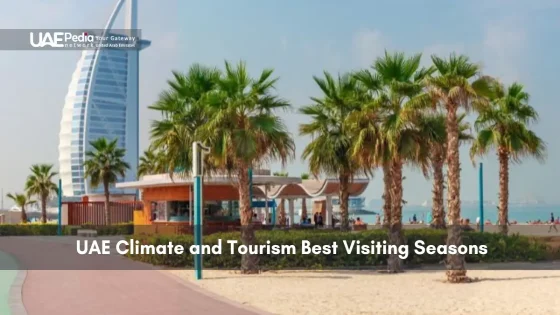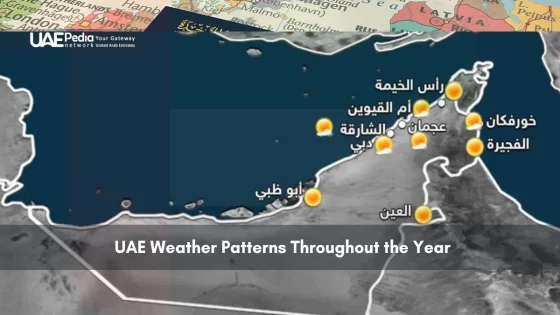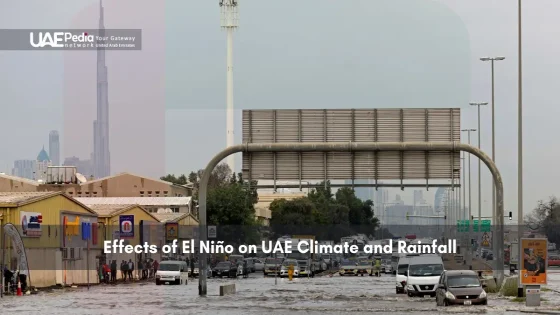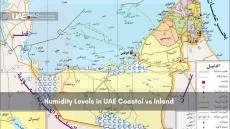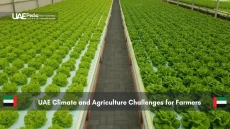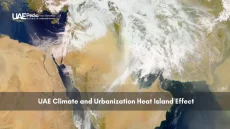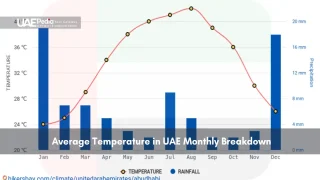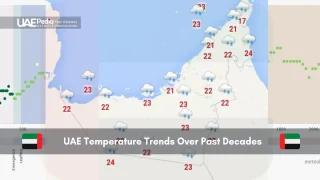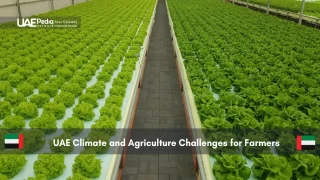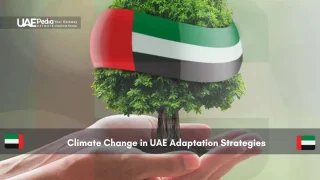What if the desert’s heartbeat syncs perfectly with modern travel dreams? The Emirates’ story isn’t just about skyscrapers piercing clouds or luxury shopping – it’s a dance between ancient sands and 21st-century vision. Summer temperatures here don’t just rise; they rewrite what “warm welcome” means, with coastal humidity creating sauna-like conditions that shape local infrastructure designs and event calendars.
Winter transforms the landscape into a global crossroads. From November to April, Abu Dhabi’s corniche buzzes with open-air festivals while Dubai’s souks overflow with spices and stories. This seasonal shift isn’t accidental – it’s a carefully choreographed balance between nature’s extremes and human ingenuity. The country’s peak visitor months reveal how tradition and innovation coexist, from Bedouin-inspired resorts to solar-powered theme parks.
Yet behind the glittering façade lies a pressing conversation. How does a land of endless summer address rising sea levels and energy demands? The answers might surprise you – hidden in wind tower architecture, mangrove restoration projects, and midnight desert cleanups led by local volunteers.
- Seasonal temperature swings dictate cultural calendars and travel experiences
- Coastal humidity patterns influence urban planning and event scheduling
- Sustainability efforts reshape traditional tourism models
Understanding the UAE Climate: Trends and Tourist Seasons
The thermometer here doesn’t just rise—it tells a story of survival and strategy. From June’s 122°F furnace breaths to January’s 75°F golden-hour breezes, this land thrives on extremes. Let’s decode how these swings shape travel calendars and why your winter escape might fund next-gen solar farms.
When Heat Meets Hospitality
Summer transforms coastal cities into innovation labs. Hotels deploy smart cooling systems while malls host indoor ski slopes—yes, real snow in 110°F weather! Check these numbers:
| Season | Avg. Temp (°F) | Int’l Visitors | Hotel Occupancy |
|---|---|---|---|
| Nov–Mar | 68–82 | 8.4 million | 89% |
| Jun–Aug | 95–122 | 1.2 million | 54% |
Peak months fuel 70% of annual tourism revenue. But clever pricing turns summer into a bargain-hunter’s paradise—think luxury suites at hostel rates.
Policy Meets Palm Trees
Abu Dhabi’s Cultural Calendar syncs with cool spells: Louvre nights under stars, Qasr Al Hosn festivals. Meanwhile, Dubai’s 2040 Urban Master Plan prioritizes shaded walkways and energy-efficient resorts. A hotel GM recently shared:
“We’ve cut AC costs by 40% using ancient wind tower designs—guests love the blend of tradition and tech.”
Local leaders aren’t just chasing growth—they’re rewriting the desert playbook. Your sunset dune tour? It might fund mangrove nurseries combatting rising seas.
Exploring the Best Visiting Seasons in the UAE
Imagine trading snow boots for sandals as winter unveils the Emirates’ golden hours. Between December and March, the country transforms into a playground of perfect 75°F days—when desert safaris feel like velvet adventures and city strolls become sun-kissed discoveries.
Winter Highlights and Ideal Vacation Windows
This peak period sees Abu Dhabi’s corniche buzzing with open-air markets, while Dubai’s souks overflow with saffron-scented treasures. Locals swear by January’s “blue nights”—when twilight lingers just long enough for dune dinners under star-speckled skies. A veteran tour operator notes:
“February’s soft light makes heritage sites like Al Ain Oasis glow—it’s when we book 80% of our cultural tours.”
Hotel rates climb with the cool weather, but savvy travelers target early December or late March for better deals. Pro tip: visit theme parks on weekday mornings when queues vanish like mirages.
Shoulder Months: What to Expect
April and November whisper secrets for flexible explorers. Mornings might bring 85°F beach walks, while evenings demand light sweaters at outdoor concerts. You’ll find:
- Quieter archaeological sites like Mleiha
- Farmers’ markets bursting with dates
- Hotels testing green initiatives (think solar-powered pools)
This transitional phase reveals the sector’s growth—new bike trails emerge as temperatures dip, while eco-lodges experiment with wind-cooled common areas. Sustainability isn’t just a buzzword here; it’s becoming part of the travel DNA.
Experiencing the Fusion of Modernity and Cultural Heritage
Ever sipped Arabic coffee in a skyscraper that mirrors ancient wind towers? This land thrives on contrasts—futuristic glass facades reflecting restored coral-stone markets. The Emirates’ secret lies in weaving tradition into tomorrow, creating spaces where Bedouin poetry readings happen beneath AI-powered light installations.
Where Past Meets Present
At Dubai’s Sheikh Mohammed Centre, lunch becomes a time machine. You’ll share machboos (spiced rice) with locals while learning Emirati sign language—a tradition preserved through storytelling. Nearby, Sharjah’s restored Heart of Sharjah district buzzes with artisans crafting palm-frond baskets beside augmented reality heritage tours. A restoration expert told us:
“We use 3D scans to rebuild crumbling forts, but keep the soul intact—the same stones, same techniques. It’s a dialogue across centuries.”
Guardians of Legacy
Abu Dhabi’s Cultural Foundation isn’t just a museum—it’s a living classroom. Kids code robots next to pearl-diving exhibits, while elders teach yowla dance steps in courtyards. These efforts fuel more than nostalgia—they’re economic engines, with heritage sites driving 23% of the region’s travel sector growth last year.
From Al Fahidi’s maze-like alleys to Ras Al Khaimah’s newly uncovered Bronze Age tombs, every corner whispers dual promises: honor roots, embrace progress. You’ll find falconry demos at solar-powered eco-resorts, or calligraphy workshops in metro stations. Here, sustainability isn’t an afterthought—it’s how history stays alive.
Responsible UAE Climate and Tourism: Sustainable Practices
What if every sun-soaked adventure could leave the dunes greener than you found them? The region’s tourism sector now thrives on a bold experiment—balancing rapid growth with nature’s delicate rhythms. From desert wadis to mangrove-fringed coasts, sustainability isn’t just a trend—it’s becoming the DNA of modern exploration.
Pack Light, Leave Lighter
Your daily choices ripple across ecosystems here. Try these simple swaps:
- Choose reef-safe sunscreen for marine adventures
- Opt for reusable water bottles—many hotels offer free refill stations
- Support camel farms using solar-powered desalination systems
Abu Dhabi’s Eastern Mangroves project shows how travel fuels conservation. Kayak through tidal forests where 60% of your tour fee funds replanting efforts. As a park ranger told us:
“Visitors become guardians—they take selfies with saplings they’ve sponsored.”
Wildlife Havens Reimagined
Protected areas like Ras Al Khor Wildlife Sanctuary prove development and nature can coexist. This urban wetland hosts 20,000 flamingos against Dubai’s skyline. Conservationists use smart tech here:
- AI monitors bird migration patterns
- Solar-powered hides for wildlife photography
- Eco-taxis transporting guests between observation points
Even luxury camps in the Dubai Desert Conservation Reserve follow strict rules—no single-use plastics, limited vehicle routes. Your evening stargazing session? It funds anti-poaching patrols protecting endangered Arabian oryx.
Next time you visit, look for the EcoStay certification on hotel websites. These properties cut water use by 35% through smart showers and native landscaping. Because here, responsible travel doesn’t mean sacrifice—it’s how we ensure tomorrow’s adventures shine brighter.
Navigating the Impact of Climate Change on UAE Tourism
Picture this: luxury resorts doubling as climate labs, where every sun lounger tracks carbon footprints. Rising temperatures are reshaping how visitors experience the region—peak seasons now feel like fleeting windows between heatwaves. Coastal hotels report shorter booking periods, while desert camps test solar-powered cooling pods. One resort manager confided:
“Our outdoor dining areas now close by 2 PM in summer—guests prefer twilight experiences under misting palm trees.”
Rising Temperatures and Its Effects on Vacationing
Extreme heat isn’t just altering itineraries—it’s rewriting economic models. Check how seasonal patterns shifted:
| Year | Peak Season Length | Avg. Daily Outdoor Activities |
|---|---|---|
| 2015 | 5 months | 6.2 hours |
| 2023 | 3.5 months | 3.8 hours |
Urban centers face dual pressures: keeping public spaces cool while protecting marine ecosystems. Coral reefs near the Palm Islands show 18% bleaching since 2020, pushing snorkeling tours to artificial reefs.
Resource Management and Future Challenges
Desalination plants now work overtime—producing 42% of the country’s water. Hotels in Abu Dhabi’s Liwa area use hydroponic gardens to cut irrigation needs. Key initiatives include:
- AI-driven irrigation in park landscapes
- Mangrove carbon offset programs for flight packages
- Nighttime desert tours to reduce AC dependency
Policymakers are rethinking rainfall trends in infrastructure plans. As one sustainability director noted: “We’re designing resorts that harvest fog—every drop counts.”
Your choices matter here. Opt for eco-certified tours supporting wildlife reserves, or stay at properties pioneering zero-waste kitchens. The sector’s future hinges on balancing growth with grit—where innovation meets responsibility under the desert sun.
Planning Your UAE Adventure: Practical Tips and Insider Insights
Ever wondered how to unlock the Emirates like a pro? Start with smart packing: breathable fabrics for daytime, a light jacket for desert evenings. Transportation here blends efficiency with flair—download the Careem app for taxis, or hop on Dubai’s driverless metro for city views.
Sleep Smart, Move Smarter
Book eco-certified stays like Al Maha Desert Resort (solar-powered villas) or The Sustainable City’s green apartments. A concierge from Jumeirah Group shared:
“Guests love our water-saving kits—reusable bottles and shower timers that make conservation effortless.”
For inter-emirate travel, try the new Etihad Rail for scenic routes. Desert camps now offer EV transfers—no more diesel fumes during dune drives.
Cultural Keys to Deeper Connections
Modesty matters outside beach clubs. Pack a pashmina for mosque visits, and avoid public displays of affection. Fridays mean family time—schedule souk trips for mornings when vendors share stories over karak chai.
Local guides recommend these ethical experiences:
- Pearl diving workshops funding marine conservation
- Falconry sessions supporting endangered species programs
- Heritage walks led by Emirati women in Ras Al Khaimah
Pro tip: Check hotel boards for community initiatives—many properties match guest donations to food banks. Your sunset camel ride? It might fund next year’s date palm harvest.
Final Thoughts on Your Journey with UAE Climate and Tourism
Journeys here leave footprints—both in sand and in sustainable progress. The dance between modern marvels and timeless traditions reveals how this destination thrives through adaptation. From solar-powered resorts to revived pearl-diving customs, every experience becomes part of a larger story.
Smart infrastructure meets ancient wisdom across protected reserves and urban hubs. Your choices matter: opting for eco-certified stays or supporting mangrove restoration projects helps preserve cultural heritage while fueling sector growth. This balance positions the region as a leader in global tourism’s sustainable future.
Pack curiosity alongside reusable bottles. Seek adventures that respect the desert’s fragile environment—think stargazing tours funding wildlife efforts or heritage walks led by local experts. The world watches as these initiatives redefine luxury travel.
As you plan, remember: flexibility unlocks hidden gems during shoulder seasons. Early mornings beat the heat at archaeological sites, while twilight reveals bustling markets. Here, responsible exploration isn’t restrictive—it’s how we ensure tomorrow’s stories remain vibrant.
Your next visit contributes to a legacy. Whether marveling at flamingo flocks near skyscrapers or learning Bedouin poetry, you’re part of shaping what comes next. The dunes whisper—listen closely, and they’ll guide you toward experiences that honor both past and progress.
Aim for November to March—cooler temps (around 77°F) make safaris, camel treks, and stargazing comfortable. Summer months soar above 104°F, so most operators pause midday activities. Pro tip: Book sunrise tours for magical golden-hour photos without the midday glare!
From LEED-certified hotels like Jumeirah at Saadiyat Island to eco-conscious attractions such as Jubail Mangrove Park, the emirate weaves green practices into every experience. You’ll find solar-powered beach clubs, plastic-free museum tours, and even carbon-neutral concert venues—proof that luxury and responsibility coexist seamlessly.
Absolutely! Cultural gems like Al Fahidi Fort or Sheikh Zayed Grand Mosque remain open, though hours may shift. Dress modestly, avoid eating/drinking publicly during fasting hours, and join evening iftar feasts—a soulful way to connect with Emirati traditions. Many hotels offer special sunset menus, too!
Seek out Ras Al Khaimah’s nature reserves (think: guided hikes in Wadi Shawka), choose reef-safe snorkeling tours in Fujairah, or stay at properties like The Ritz-Carlton Abu Dhabi, which partners with local turtle conservation programs. Even small acts—refilling water bottles at free stations in Dubai Metro—add up!
Innovation’s key—Abu Dhabi’s Masdar City trials solar-powered cooling systems, while Dubai’s Museum of the Future explores adaptive tech. Resorts now use hyper-efficient AC, and indoor ski slopes offer year-round winter sports. Expect more shaded urban parks, nocturnal summer festivals, and AI-driven weather apps for smarter touring.
Split your mornings between cultural spots (Louvre Abu Dhabi opens at 10 AM) and afternoons at lesser-known beaches like Al Mamzar in Sharjah—entry’s just $1.30, with picnic areas and calm waters. Evenings? Hit rooftop lounges or souks once temps drop. Layer light fabrics; desert nights can surprise with a chill!
